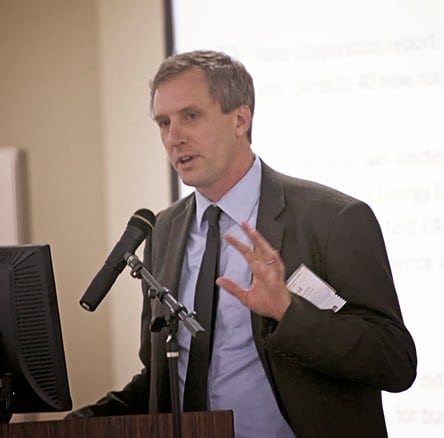Solar Photovoltaic Growth Driving Changes in California Power Market
California leads the nation in installed solar photovoltaic (PV) capacity, with almost 150,000 systems large and small in operation and more than 2 GW of total capacity. Worldwide, California would rank 7th in installed solar capacity (PV and thermal) were it a separate country.
All that activity is leading to some major changes in the California energy market, according to several speakers at the 2014 Solar Energy Conference held at the Center for Environmental Research and Technology at the University of California, Riverside, earlier this month.
David Hochschild, commissioner with the California Energy Commission (CEC), keynoted the meeting by summarizing the impressive progress in solar PV development in California (Figure 1). The state leads in new solar home construction, with 8,000 installed and 12,000 more under way. It also has seen a 600% increase in utility-scale solar in just the last three years. Several of the largest utility-scale PV projects in the world, such as the Desert Sunlight project in the Mojave Desert and the Solar Star project in Los Angeles and Kern counties, are currently under construction. (The state also hosts the largest solar thermal plant, Ivanpah, which came online last week.)

The drivers, Hochschild explained, have been strong policy support at the state and local level. California has the nation’s highest renewable portfolio standard—33%—as well as strong net metering policies; the California Solar Initiative, which offers rebates for new solar PV systems; and the California Renewable Auction Mechanism (RAM), which supports small-to-medium renewable energy development.
While California residential rates are higher than the national average, average total electric bills are 20% below the national average due to decades of support for energy efficiency, Hochschild noted. He remarked later, however, that he felt the U.S. was unlikely to ever follow the German model of feed-in tariffs.
Hochschild also hailed the storage mandate enacted by the California Public Utilities Commission (CPUC) last year. “Storage is absolutely critical to integrating renewables,” he said.
Several speakers addressed concerns about maintaining grid stability with high levels of renewable penetration. Long-term growth of solar PV will create challenges in handling output during peak periods, said Mark Nelson, director of integrated planning and strategy, Southern California Edison. He sketched out some scenarios of what could happen if California goes beyond its 33% mandate. At 40% solar PV penetration, the state would likely experience overgeneration risks during the spring, when sunlight is plentiful but power needs are low. A 50% solar PV penetration would mean overgeneration risks for most of the year.
Edward Randolph, director of the energy division for the CPUC noted that flat demand growth, in part due to increases in efficiency, was likely to drive fossil plant retirements as more solar comes onto the grid. A number of plants along the coast will shut down, as “there’s no need for them,” he said. More solar is good, but “we should look at the costs of integrating it into the grid.”
Sarah Kurtz, PV reliability group manager with the National Renewable Energy Laboratory, noted that solar PV is expected to constitute 10% of new generation capacity worldwide over the next decade. That’s going to create a need for smarter grids and more utility-scale storage.
Kurtz also noted, however, that the industry needs better standards for safety and reliability. The rapid growth has masked potential issues about long-term reliability and performance. As the industry matures, these concerns will need to be resolved for its long-term health.
The conference also included several poster presentations from UC Riverside students. One interesting project was a mobile solar PV array that could potentially provide onsite solar power (Figure 2).

—Thomas W. Overton, associate editor (@thomas_overton, @POWERmagazine)